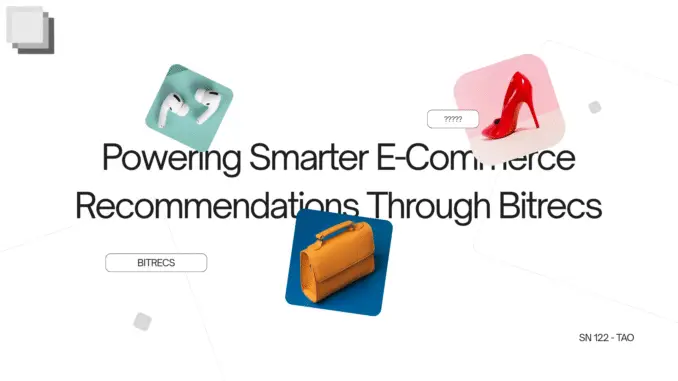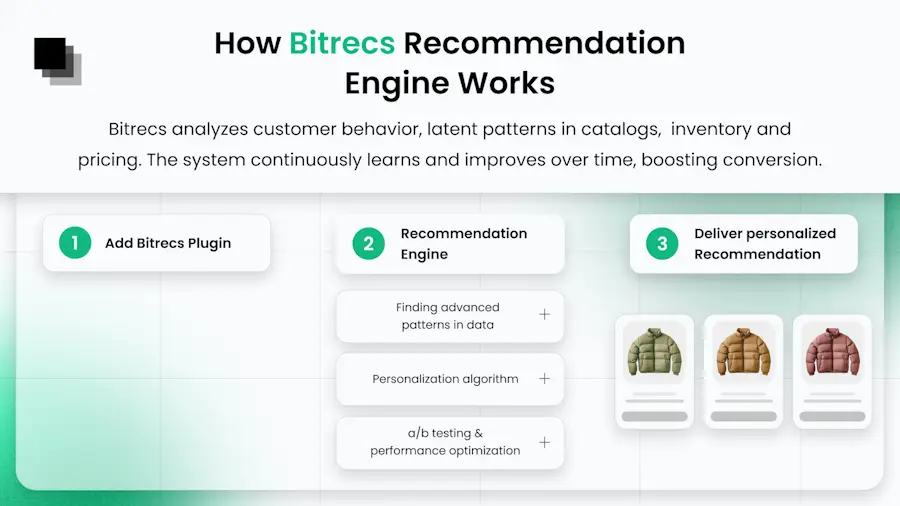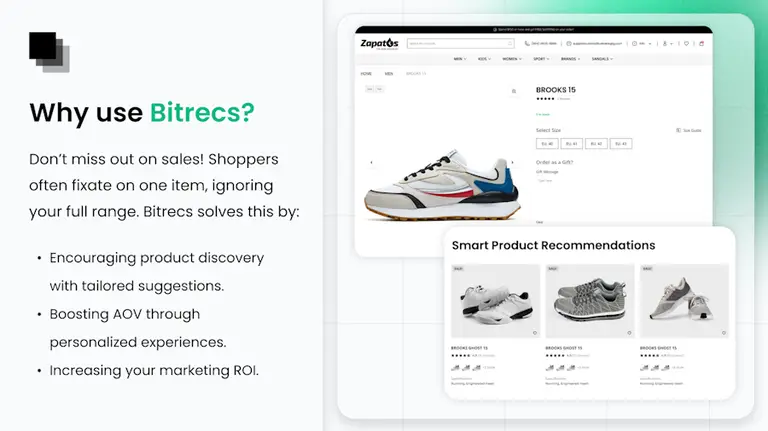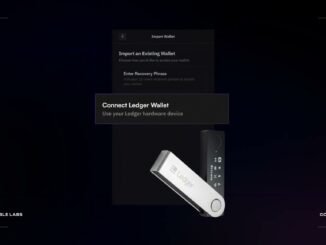
Recommendation systems power much of today’s digital economy — from Netflix’s movie suggestions to Amazon’s “customers also bought” prompts. In e-commerce, these systems directly shape sales outcomes, with Amazon attributing 35% of its online revenue to recommendations alone.
Yet, most small and mid-sized retailers lack access to such technology. Existing solutions on platforms like Shopify or WooCommerce often rely on outdated, rules-based widgets that deliver limited value. Bitrecs addresses this gap by introducing a decentralized, incentive-driven recommendation engine built on Bittensor’s subnet 122.
The Solution: Subnet 122 on Bittensor
Bitrecs uses Bittensor’s incentive layer to reward miners for producing high-quality product recommendations in real time. Instead of rules or static datasets, Bitrecs leverages large language models (LLMs) and ensemble methods to deliver recommendations that are timely, diverse, and optimized for sales conversion.
Merchants, those who own e-commerce stores, pay subscription fees to integrate Bitrecs on their store via a simple plugin. On the backend, miners compete to deliver the most relevant recommendations while validators ensure quality by ranking miner outputs according to performance metrics.
How the Bitrecs Recommendation Engine Works

Bitrecs is designed to bring the power of real-time, AI-driven recommendations to online merchants. It works in a three-step merchant-facing process, powered by a decentralized backend workflow:
1. Add Bitrecs Plugin
Merchants install a simple plugin on their e-commerce store—Shopify or WooCommerce. This plugin connects their product catalog and customer interaction data (like product views, add-to-cart events) to the Bitrecs.
2. Recommendation Engine
Once data is sent into the subnet, a decentralized workflow kicks in:
a. Input: Shopper actions (clicks, views, carts) and catalog SKUs (Stock Keeping Units) are captured.
b. Generation: Miners query multiple LLMs using structured prompts to generate product recommendations.
c. Ensemble Voting: Outputs from different LLMs are compared. Agreement across models increases confidence in the recommendation set.
d. Validation: Validators score miner outputs based on Latency (speed of response), diversity of product suggestions, coherence to the input SKU and context, and real shopper actions (e.g., add-to-cart, purchases).
e. The top-ranked recommendations are selected in near real-time.
3. Deliver Personalized Recommendations
Recommendations are instantly returned to the merchant’s storefront, such as “You may also like…” or “Customers also bought…”. Shopper engagement (clicks, conversions) feeds back into the subnet, continuously improving miner performance and recommendation quality.
The Perks of Using Bitrecs

Bitrecs isn’t just another recommendation engine—it’s built to make personalization smarter, simpler, and more rewarding for merchants and shoppers alike.
Here’s how it stands out:
a. Encourage Product Discovery: Tailored suggestions help shoppers explore beyond the single item they fixate on.
b. Boost Average Order Value (AOV): Personalized recommendations increase basket size and conversion.
c. Maximize ROI: Smarter targeting ensures your marketing spend delivers stronger returns.
d. Low Entry Barrier: Mining on Bitrecs requires no GPUs—making participation simple and accessible.
e. Future-Ready Personalization: Built to evolve toward Netflix-style individualization at scale.
f. Privacy-First: Uses only minimal, anonymous data fully controlled by the merchant.
g. Scalable Design: Starts with e-commerce but is adaptable to broader recommendation use cases.
Conclusion
Bitrecs represents a significant step in democratizing recommendation technology. By combining Bittensor’s decentralized incentive model with the power of LLMs, it delivers real-time, sales-driving product recommendations to retailers of any size.
To ensure sustainability, Bitrecs takes a straightforward approach: unlike many blockchain protocols, it does not implement a token buyback-and-burn mechanism. Instead, revenues come directly from merchant subscription fees.
For merchants, this means higher sales and customer satisfaction. For miners and validators, it creates new earning opportunities. For the broader e-commerce ecosystem, it levels the playing field against incumbents like Amazon, ensuring innovation is distributed and accessible.
Resources
To explore Bitrecs, stay connected on official channels via:
Website: https://www.bitrecs.ai
X (Formerly Twitter): https://x.com/Bitrecs
GitHub: https://github.com/bitrecs
Docs: https://bitrecs.gitbook.io/bitrecs-docs




Be the first to comment